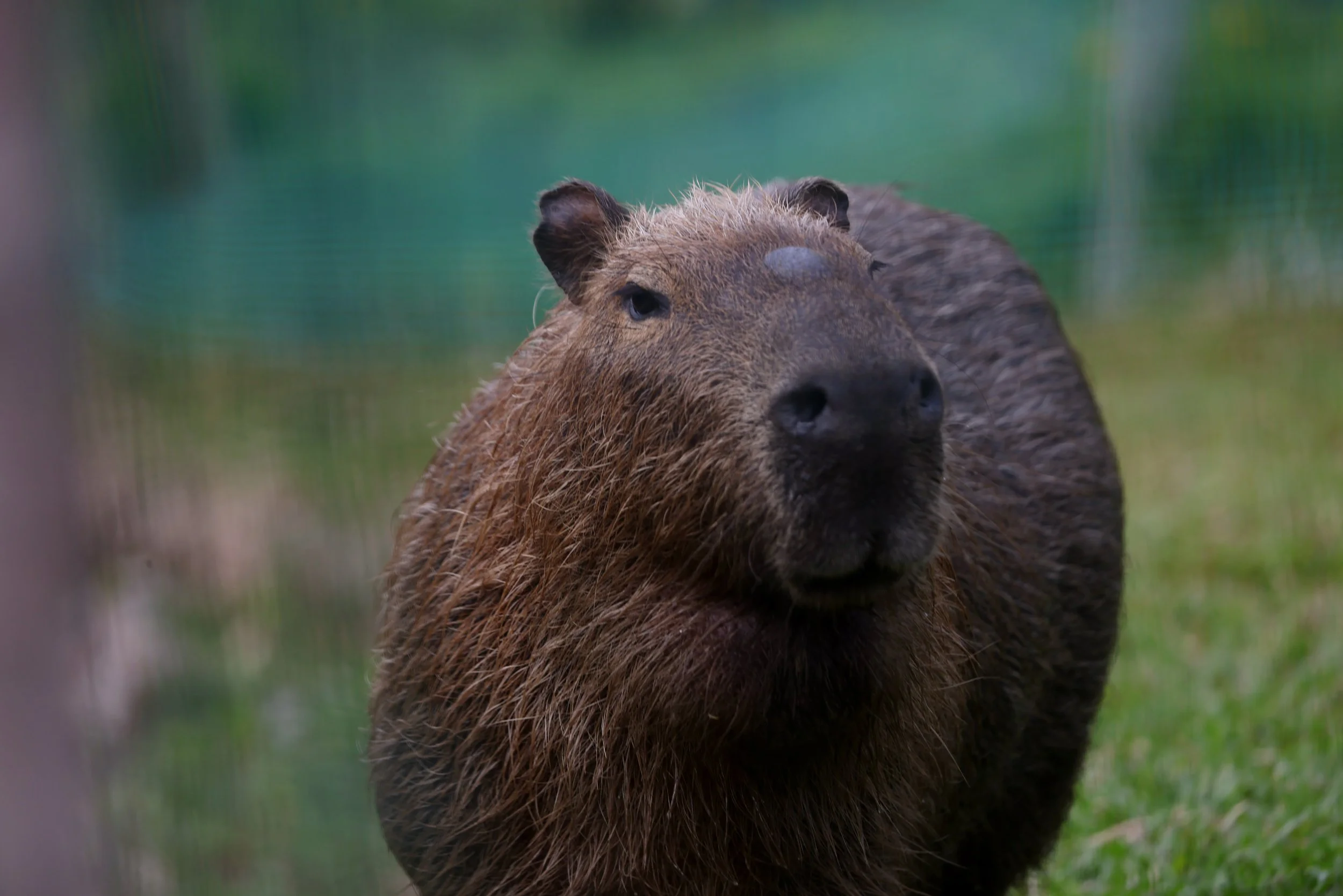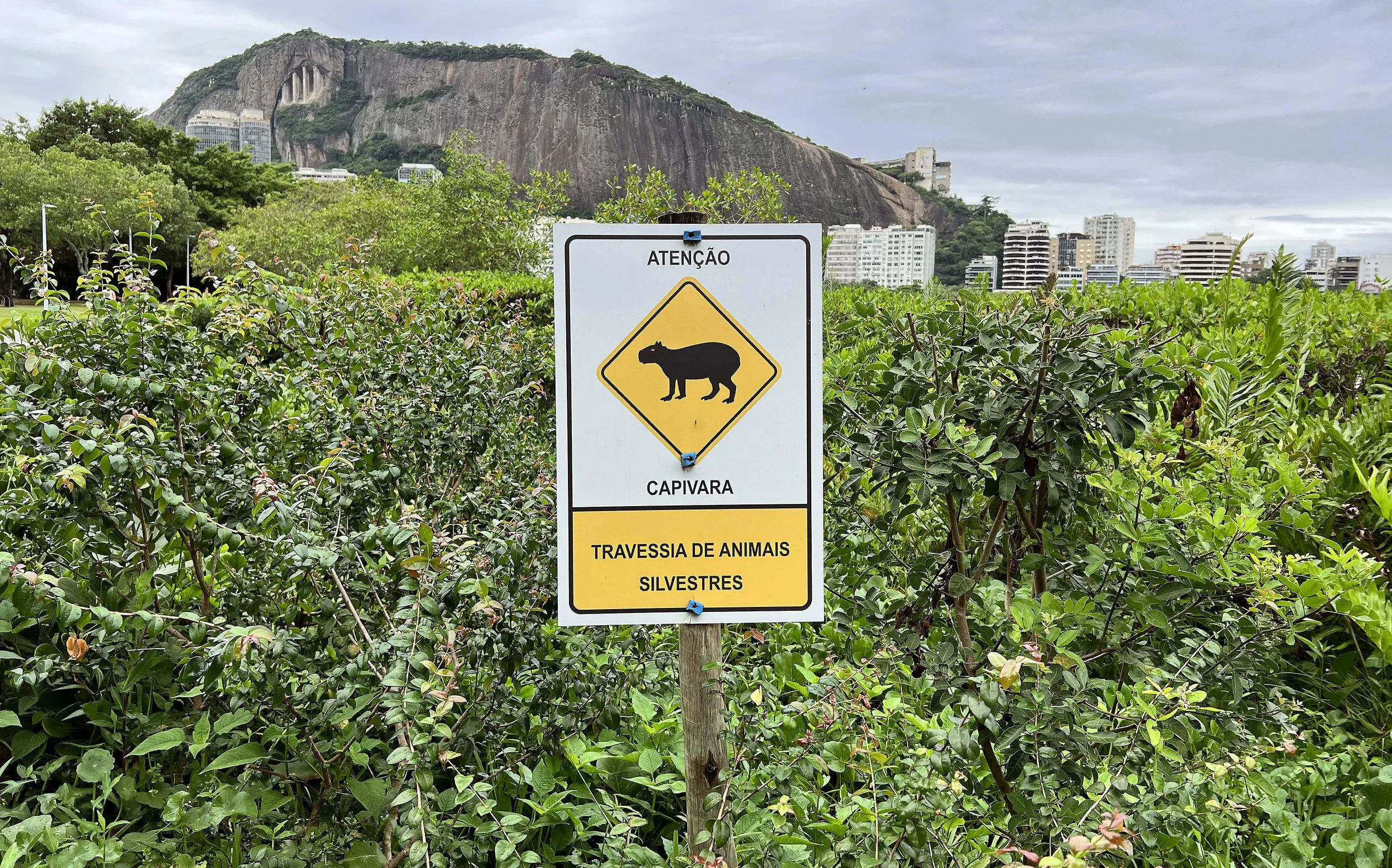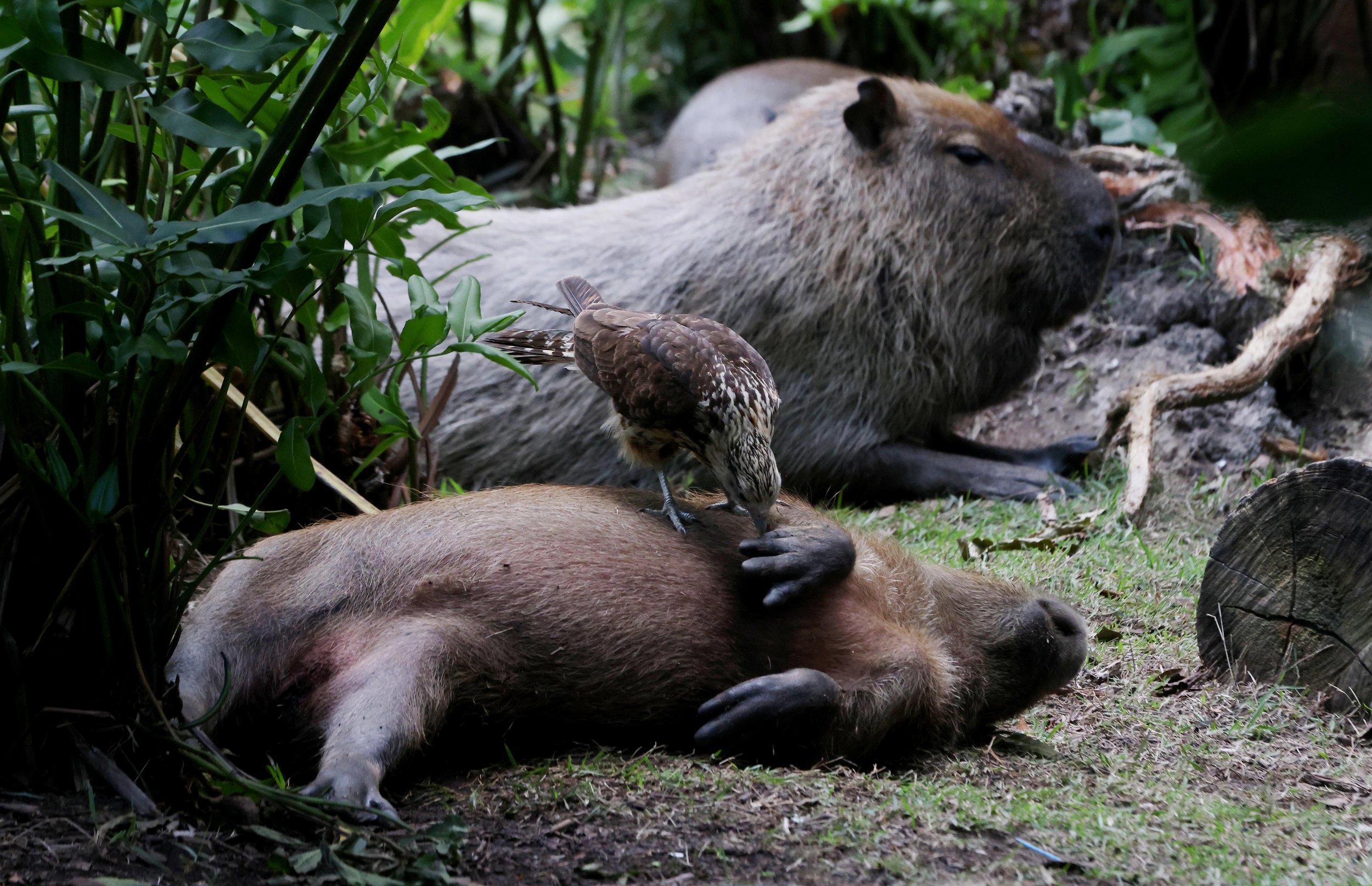I don't know when exactly the capybara became my spirit animal, but it’s clear now that it has.
While in Rio, I’ve photographed toucans, monkeys, fur seals, penguins, all in their natural habitats, right in the middle of an urban setting, which is wild. But there’s something uniquely special about the capybara, something I’ve been dreaming of ever since my first walk around Rodrigo de Freitas Lagoon. I remember seeing a sign that said, ‘Attention, Capybara Wildlife Crossing.’
It took me about three months of daily walks around the five-mile lagoon before I finally spotted one. A woman had been staring at something from one of the stone walls surrounding the lagoon, and as she moved on, I cautiously approached. What could it be? And there it was: the world’s largest rodent, the new pop culture icon and meme, the capybara.
My first Capybara sighting, March 27, 2024 the day that will live in infamy
Since that first encounter, I’ve had many others, all at different locations around the lagoon. But last week’s was truly one of a kind.
Recently, a newly restored naturalized area opened along Rio’s Rodrigo de Freitas Lagoon. The city’s nature-based project diverted a bike path to reduce flooding and restore the lagoon’s ecosystem, its first major restoration in over a century. A family of ten capybaras, five adults and five pups, now call this restored area home. The capybaras, South America’s largest rodents and semi-aquatic by nature, have become a beloved fixture in Rio’s urban green spaces.
This week, I went for my usual walk and noticed two capybaras from the family of ten. They were hanging out in the restored naturalized area, set back among the mangroves. There’s a particular spot along a restaurant where you get a great side view of the area, so I circled around to get a better look. To my surprise, I found a few of the pups. I spent the next hour hopping between locations, observing the family. Then, something extraordinary happened.
An adult capybara had a visitor: a juvenile Yellow-headed Caracara landed on its back and began grooming it. True to capybara form, the adult didn’t flinch, it simply continued sitting, calm and mellow, as if this was the most normal thing in the world. I couldn’t help but rush home to send the images to my agency. I was so happy to have witnessed such a beautiful act of nature’s symbiosis.
Two days later, I returned to the lagoon. Again, I saw the juvenile Yellow-headed Caracara, this time trying to take some parasites or insects from the capybara’s back. In the most cartoonish fashion, the adult rolled onto its back and let out a small grunt. Later, the bird jumped onto one of the pups, which startled him and the other three pups. They jumped up, barking (capybara vocalizations sound like a dog’s woof), and rushed into the lagoon.
They came back soon after, and when the bird jumped up on one of the pups again, the little capybara, just like its parent, rolled over onto its side. With its feet extended and those cute little webbed toes, the pup remained calm while the bird continued its grooming.
It was the highlight of my capybara adventures, and I have images from that day that I’ll never forget.





